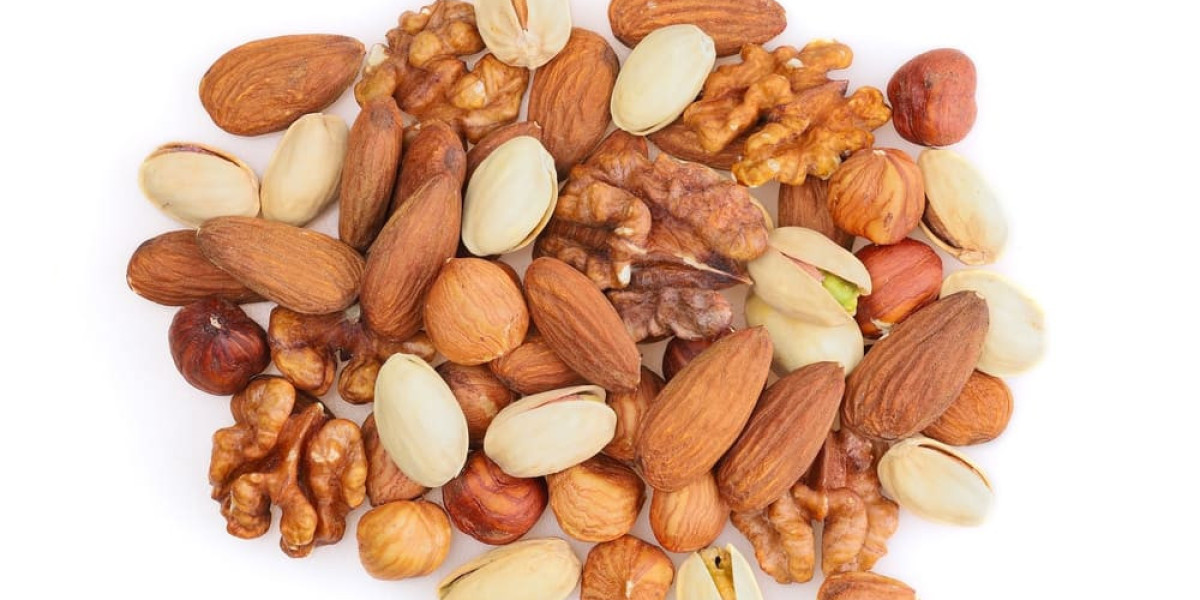The Timeless Connection Between Dry Fruits and the Middle East
The history of dry fruits is deeply tied to the Middle East, a region often considered the cradle of civilization. From ancient trade routes to modern-day kitchens, dry fruits have been an essential part of everyday life. They are valued not only for their taste but also for their nutritional benefits and cultural significance.
In recent years, the love for dry fruits has extended globally, including the rising popularity of dry fruits in Pakistan. This connection between tradition and modern health trends shows how these nutrient-rich treasures have stood the test of time, continuing to enrich cuisines worldwide.
Ancient Origins of Dry Fruits
Early Preservation Techniques
Centuries ago, people in the Middle East discovered that drying fruits was the perfect way to preserve seasonal harvests. The hot, arid climate made it easy to dry dates, figs, apricots, and raisins under the sun. These early preservation methods ensured a steady food supply during harsh winters or long journeys.
Dry fruits quickly became more than just preserved food. They evolved into a staple for traders, travelers, and families alike, providing long-lasting energy and essential nutrients.
Trade and Cultural Exchange
The Middle East sat at the crossroads of ancient trade routes like the Silk Road. Caravans loaded with spices, textiles, and dry fruits connected Asia, Africa, and Europe. These trade routes spread the use of dry fruits far beyond the region, introducing them into Mediterranean and South Asian cuisines.
This exchange also led to the introduction of unique recipes and preparation techniques, many of which are still popular today.
Dry Fruits in Traditional Middle Eastern Dishes
The Role of Dates
Dates are perhaps the most iconic dry fruits in Middle Eastern cuisine. They are a staple during Ramadan, breaking fasts at Iftar for centuries. Dates are also used in traditional desserts, energy-rich snacks, and even savory dishes, symbolizing health and prosperity.
Their natural sweetness and versatility made dates a cherished ingredient in both royal feasts and humble family meals.
Figs, Apricots, and Raisins
Figs and apricots were also integral to ancient Middle Eastern kitchens. These fruits added flavor and nutrition to stews, pilafs, and bread. Raisins, with their sweet and tangy taste, became a common ingredient in festive rice dishes and celebratory desserts.
Today, these recipes still hold a special place in Middle Eastern households, connecting generations through shared meals and traditions.
The Influence of Dry Fruits on Festive Traditions
Religious and Cultural Celebrations
Dry fruits have played an important role in religious and cultural celebrations for centuries. During Ramadan, Eid, and other festivities, trays of dry fruits are shared with guests as a sign of hospitality and blessing.
This tradition extends beyond the Middle East. In regions like South Asia, including dry fruits in Pakistan, these customs were embraced and adapted, enriching local culinary practices.
Symbol of Luxury and Health
Historically, dry fruits were also considered a sign of wealth and abundance. Royal families and wealthy merchants would serve dishes filled with almonds, pistachios, and walnuts during banquets. These ingredients elevated the status of a dish and demonstrated the host's prosperity.
Even today, gifting boxes of premium dry fruits remains a popular way to express respect and good wishes.
Dry Fruits in Iconic Middle Eastern Recipes
Pilafs and Rice Dishes
Dry fruits like raisins, apricots, and dates are often added to pilafs and rice-based dishes. Their sweetness balances savory spices, creating rich layers of flavor. These dishes are commonly prepared for weddings, feasts, and family gatherings.
This combination of grains, nuts, and dry fruits represents the harmony of flavors and cultures that define Middle Eastern cuisine.
Sweets and Desserts
From baklava to ma’amoul, Middle Eastern desserts are incomplete without dry fruits. Almonds, pistachios, and walnuts provide crunch and richness, while dates and figs bring natural sweetness. These desserts are enjoyed during holidays and special occasions, reflecting the region’s love for indulgent yet wholesome treats.
In countries like Pakistan, similar desserts often incorporate dry fruits in Pakistan, showcasing how culinary traditions have traveled and evolved over time.
Nutritional Value Through the Ages
Sustenance for Travelers and Warriors
For centuries, dry fruits were valued as an energy-dense food source. Traders, nomads, and soldiers carried them during long journeys because they were lightweight, nutritious, and easy to store.
This practical use helped cement dry fruits as an indispensable part of Middle Eastern life, where they were equally appreciated in humble homes and royal courts.
Modern Recognition of Health Benefits
Today, science confirms what ancient cultures instinctively knew: dry fruits are packed with essential nutrients. They provide vitamins, minerals, fiber, and healthy fats, supporting heart health, energy levels, and overall wellness.
The increasing demand for premium dry fruits in Pakistan and other countries reflects this modern awareness of their health benefits.
Global Spread of Middle Eastern Dry Fruit Culture
Influence on South Asia
Trade and migration helped spread Middle Eastern culinary traditions to South Asia. Over time, dry fruits in Pakistan became an integral part of local cuisine, from biryanis and halwas to festive snacks.
This cultural exchange enriched both regions, creating shared recipes that continue to bring communities together.
European and Western Adoption
As trade expanded, dry fruits found their way into European kitchens. They became key ingredients in holiday desserts, bread, and puddings. Today, Middle Eastern-inspired recipes featuring dry fruits are celebrated worldwide for their rich flavors and history.
How Dry Fruits Remain Relevant Today
Modern Uses
Today, chefs and home cooks continue to innovate with dry fruits. Smoothies, energy bars, salads, and gourmet desserts incorporate these traditional ingredients into contemporary recipes.
In Pakistan, young entrepreneurs and health brands are promoting creative uses of dry fruits in Pakistan, from organic snack packs to artisanal desserts.
A Bridge Between Tradition and Health
Dry fruits are more than just food; they are a bridge between cultural heritage and modern wellness trends. They remind us of ancient trade routes, festive traditions, and the shared history of communities across continents.
Choosing Quality Dry Fruits
Freshness and Authenticity
To experience the true essence of Middle Eastern cuisine, it’s important to choose fresh, authentic dry fruits. Look for uniform color, natural aroma, and clean packaging.
For buyers seeking the best dry fruits in Pakistan, local vendors and trusted online stores often provide high-quality options sourced directly from farms.
Proper Storage
Store dry fruits in airtight containers to retain their flavor and nutritional value. Refrigeration during hot weather helps preserve their freshness for longer periods.
Conclusion
The history of dry fruits in Middle Eastern cuisine is a story of innovation, culture, and connection. From ancient preservation techniques to luxurious royal feasts, these nutrient-rich foods have shaped culinary traditions for centuries.
Today, the love for dry fruits in Pakistan and around the world reflects their timeless appeal. Whether in a traditional pilaf, a decadent dessert, or a modern smoothie, dry fruits continue to nourish our bodies and connect us to a rich cultural legacy that spans generations and borders.



